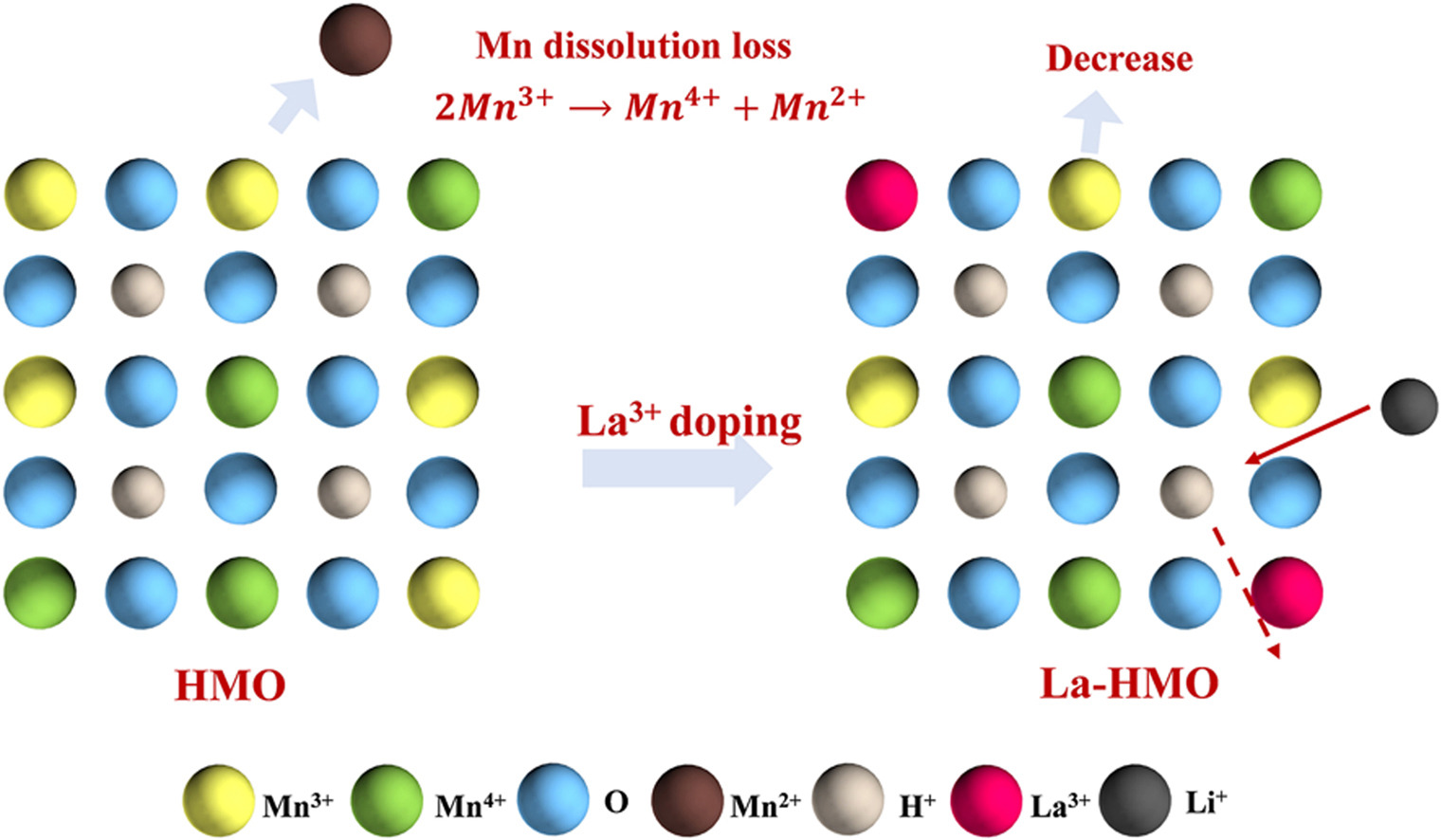• La3+ doped spinel-type La-HMO lithium ion-sieve was easily synthesized.
• La3+ doping increases average oxidation state of Mn, effectively inhibits dissolution of Mn.
• After 5 cycles, Mn dissolution loss of La-HMO decreased from an initial 4.62 %–4.04 %.
Driven by the increasing global demand for lithium, significant attention has been directed toward developing efficient technologies for lithium extraction from Salt Lake brines. Li1.6Mn1.6O4 spinel shows high lithium selectivity and notable theoretical uptake capacity, indicating strong application potential in lithium extraction. However, the industrial application of this material is limited by its strong Jahn-Teller effect and manganese dissolution loss. In this study, LiOH and MnCO3 were selected as the raw materials and La2O3 was used as the doping modifier. The La3+-doped Li1.6Mn1.6O4 precursor (La-LMO) was fabricated through hydrothermal and high-temperature solid-phase synthesis techniques. Then La3+ doped H1.6Mn1.6O4 lithium ion-sieve (La-HMO) was prepared by pickling. The materials' structure and morphology were examined using XRD, SEM, TEM, and XPS techniques. La3+ doping does not alter the spinel structure of LMO but reduces Mn3+ content, mitigates the Jahn-Teller effect, lowers the manganese dissolution rate, and enhances structural stability. Adsorption of Li+ onto La-HMO follows pseudo-second-order kinetics and fits the Langmuir model, suggesting homogeneous monolayer adsorption driven by chemisorption. In the lithium extraction experiment from the brine of West Tai Kinel Salt Lake, La-HMO demonstrated high adsorption capacity and superior selectivity for Li+. After five cycles, La-HMO maintained an adsorption capacity of 33.10 mg/g, higher than the 26.80 mg/g for undoped HMO. The manganese dissolution rate dropped from 4.65 % to 4.04 %. The study significantly improved the adsorption properties and structural stability of HMO by doping La3+, which has broad application prospects in the separation and extraction of lithium resources in Salt Lake.

